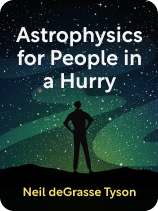

This article is an excerpt from the Shortform book guide to "Astrophysics for People in a Hurry" by Neil de Grasse Tyson. Shortform has the world's best summaries and analyses of books you should be reading.
Like this article? Sign up for a free trial here.
Are we stardust? What assumptions do physicists make? Why should people study the cosmos?
Science educator Neil deGrasse Tyson finds it exciting to know there’s so much left in the universe to discover. In his book, he says that the study of astrophysics gives us a valuable perspective on ourselves while revealing the nature of the universe in which we live.
Continue reading for a few Astrophysics for People in a Hurry quotes, along with some context and explanation.
Astrophysics for People in a Hurry Quotes
We’ve collected three Astrophysics for People in a Hurry quotes to give you a sense of the ideas Tyson discusses in his book.
“We are stardust brought to life.“
Tyson explains that the birth of the stars added something to the universe we now take for granted—all the elements on the periodic table. The Big Bang gave birth to hydrogen and a fractional amount of helium, but all the other elements we know of today were created in the hearts of burning stars.
Iron holds a special place in the cosmos—it’s the atom where nuclear fusion ends. Fusing iron into heavier elements takes more energy than it produces. Once a star builds up too much iron in its core, the process of nuclear fusion stops. The star dies, shedding most of its mass back into space, including all the new elements it created. This, says Tyson, is the most important link between ourselves and the stars. Every hydrogen atom in the water in our bodies was created by the Big Bang. Every other atom inside us came into being in the heart of a star.
“After the laws of physics, everything else is opinion.”
The first general assumption that physicists make is that the same laws of physics apply everywhere in the universe. Tyson writes that, so far as we can see, every observation we make in space confirms this. The rules of gravity that apply here on Earth govern the motion of stars in distant galaxies. The rules of chemistry that we confirm in earth-bound labs hold true when we explore other planets. On Earth, we use the science of spectroscopy to analyze the elements that make up hot gasses—and those exact same atomic fingerprints are found in the light from distant suns.
“The cosmic perspective shows Earth to be a mote. But it’s a precious mote and, for the moment, it’s the only home we have.”
Tyson asserts that the study of the cosmos has stripped humanity of its archaic belief that we hold a special place at the center of the universe, while it also affirms what we share in common and provides a vast new frontier for discoveries that may transform how we understand reality.

———End of Preview———
Like what you just read? Read the rest of the world's best book summary and analysis of Neil de Grasse Tyson's "Astrophysics for People in a Hurry" at Shortform.
Here's what you'll find in our full Astrophysics for People in a Hurry summary:
- Neil deGrasse Tyson's simple explanations of some of the mysteries of the cosmos
- Why everyone should understand where we fit in the universal scheme
- Why humans need to climb off their pedestals






